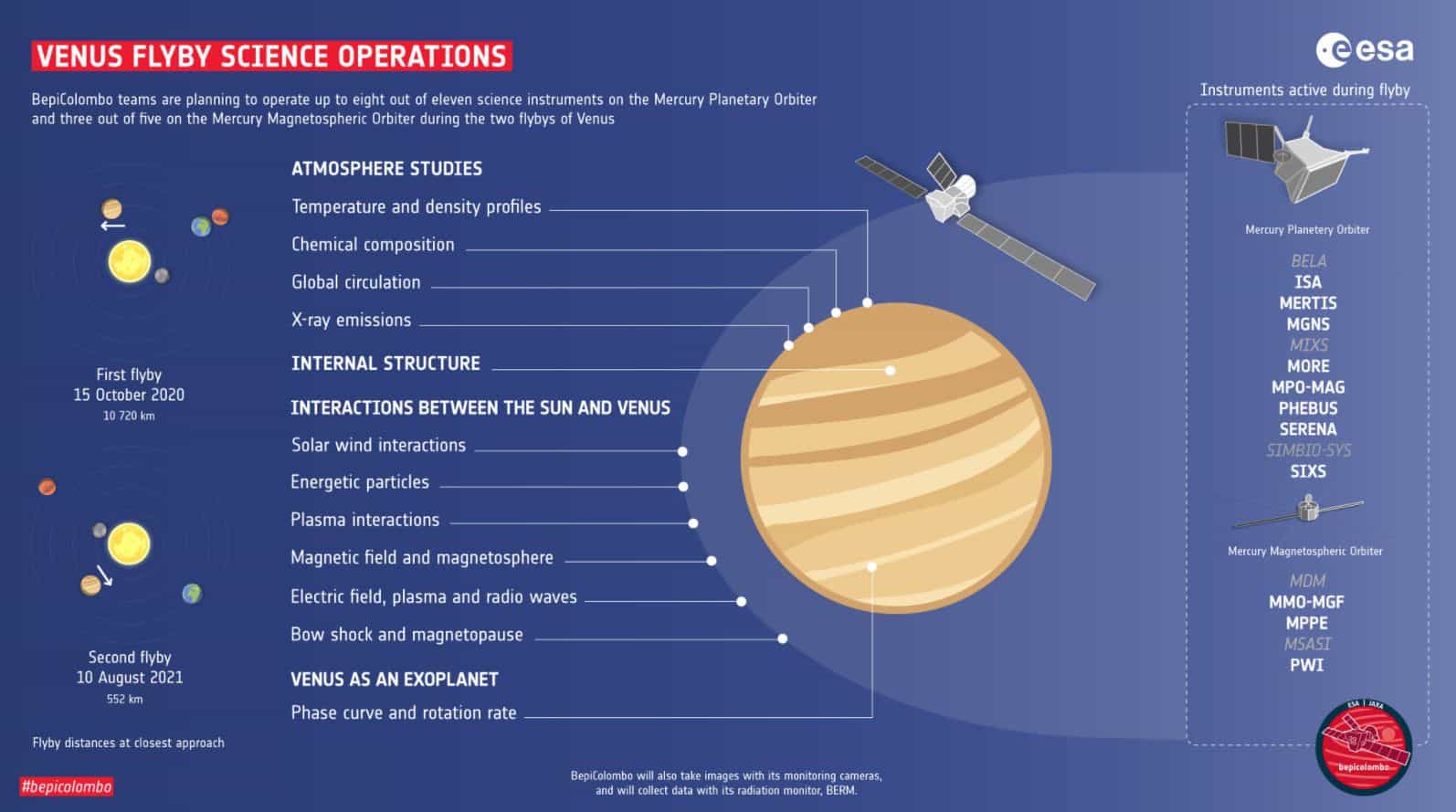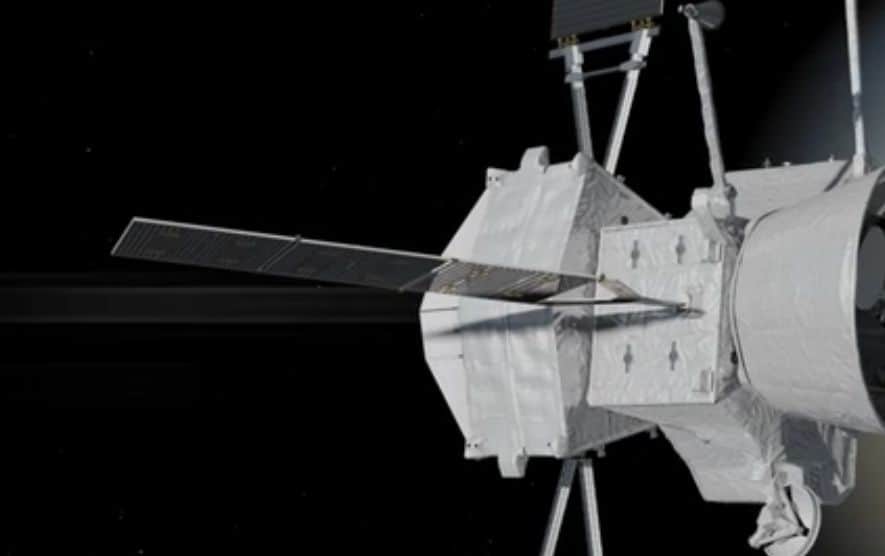BepiColombo mission probe, flying to Mercury, successfully completed the first gravitational maneuver near Venus.
During the flyby, the spacecraft’s scientific instruments examined the atmosphere and magnetosphere of Venus and searched for phosphine, and the cameras received several images, according to the European Space Agency.
As part of the BepiColombo project, Mercury will be investigated by two scientific probes: the European MPO (Mercury Planetary Orbiter) and the Japanese MMO (Mercury Magnetospheric Orbiter), which will deliver the MTM migratory module to the planet. The spacecraft launched into space in October 2018, and in April this year BepiColombo successfully performed a gravitational maneuver near the Earth. The scientific tasks of the project include mapping the surface of Mercury, studying its terrain and searching for ice deposits, studying the inner structure of the planet, the magnetosphere and exospheres, as well as the verification of the General Theory of Relativity by accurate measurement of the positions of the spacecraft in orbits.
On October 15, BepiColombo performed the second and the first gravitational maneuver near Venus, passing at 03:58 UT at a minimum distance of about 10,720 km from the planet’s surface. During the flyby, the cameras and most of the scientific instruments were active, exploring the atmosphere and magnetic field of Venus, as well as trying to detect phosphine on it. Among them were the Russian gamma and neutron spectrometer MGNS, which should help estimate the amount of water vapor in the atmosphere of Venus, as well as the ultraviolet spectrometer PHEBUS and the energy-mass spectrometer of positively charged ions PICAM, which are part of the SERENA plasma complex.

The next flyby of Venus will take place in August 2021, and in October 2021, the first gravitational maneuver near Mercury will be performed, followed by five more. And only in December 2025, the probes will enter working polar orbits and begin a scientific program designed for at least a year.
